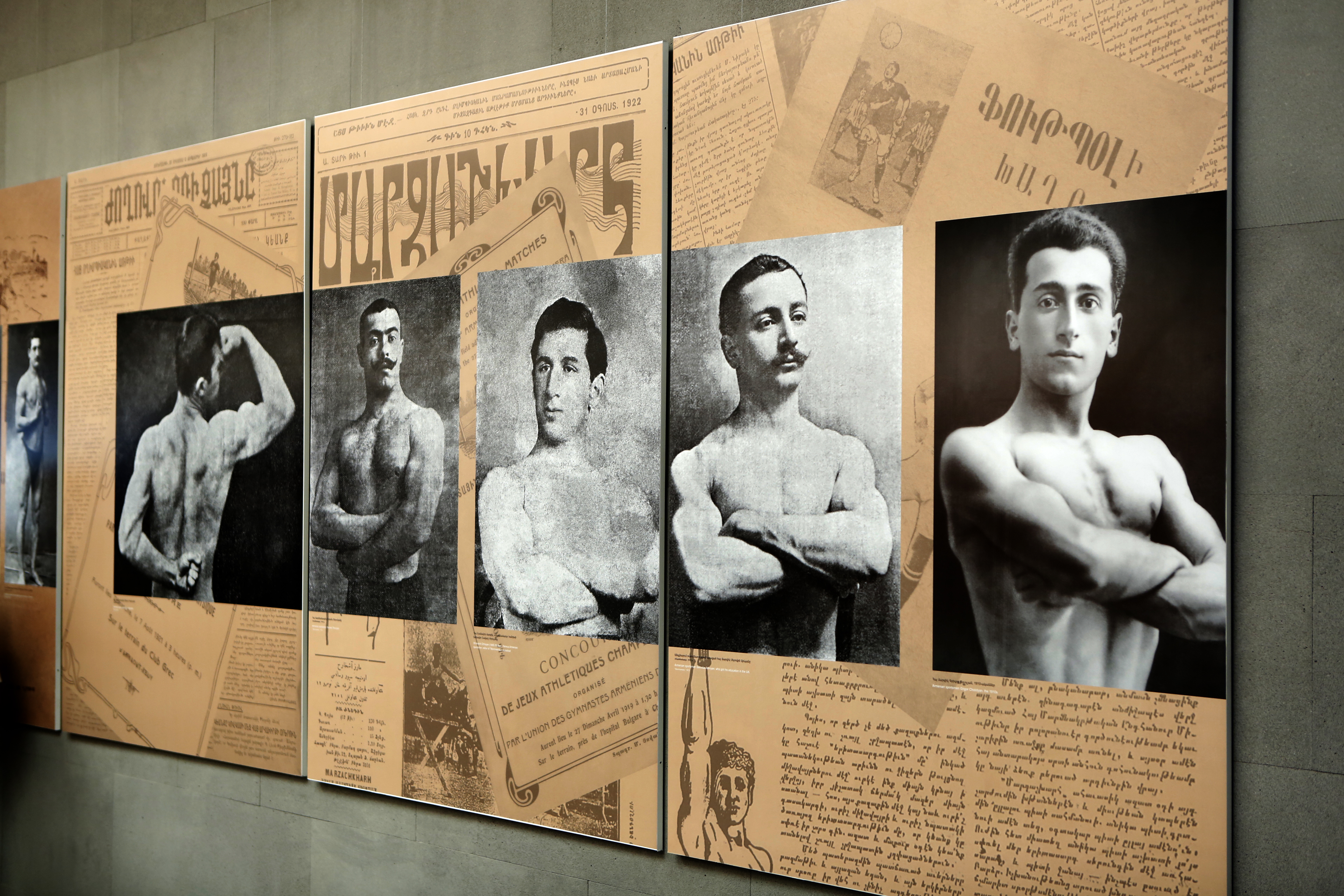04.08.2015

Today in the temporary exhibition hall of Armenian Genocide Museum a new exhibition titled “Armenian Sports and Gymnastics in the Ottoman Empire” has opened. This exhibition was firstly opened in 2009, but now is replenished with hundreds of new materials and unique photographs, which refer to the history of Armenian sports that started developing and spreading in Armenian populated areas of the Ottoman Empire.
AGMI director Hayk Demoyan says:
“This exhibition includes unique original photographs relating to the Armenian sport life in the Ottoman Empire, as well as, prizes, rare medals, posters of sport competitions, newspapers and other exhibits. Most of them are donated to the Armenian Genocide Museum-Institute by Jololian family”.
The exhibition is based on the eponymous book by Hayk Demoyan and contains 12 subtitles:
• The development of sports and gymnastics in the Ottoman Empire
• The development of Armenian sports and gymnastics in the Ottoman Empire
• Sport and gymnastics movement in Smyrna
• The development of sports and gymnastics in Western Armenia and Cilicia
• Armenian woman and gymnastics
• Armenian Olympic Games (191-1914)
• The participation of Armenian sportsmen in the International Olympic Games in 1912
• Sport and national competition
• The loss of Armenian sports during the Armenian Genocide
• Armenian sports in postwar period (1918-1922). The formation of AGAU
• Sports and gymnastics in Armenian orphanages
• The birth and development of Armenian scout movement
This temporary exhibition which is dedicated to the 6th Pan-Armenian Summer Games held in Armenia during 2-13 August, 2015 is a great opportunity to get acquainted with the history of Armenian sports.
“Grigor Jololian’s unique photograph collection and other original samples became part of Armenian Genocide Museum-Institute collection. They refer to the history of Armenian sport movement during 1911-1922”, mentions Gohar Khanumyan, Chief Fund Keeper of AGMI.
“Individualism has become extremely dominant among Armenians, and collective sense almost disappeared, no doubt that the unfavorable environmental conditions of the past and the raising methods worked in such a way that now it is easier to hate each other.
It is time to change the conditions, we don’t need to cry and hate each other, our experienced ancestors taught us only to despise and hate each other. We are tired of this, we need to love each other and work together, to struggle and enjoy together…”
Shavarsh Chrisyan





